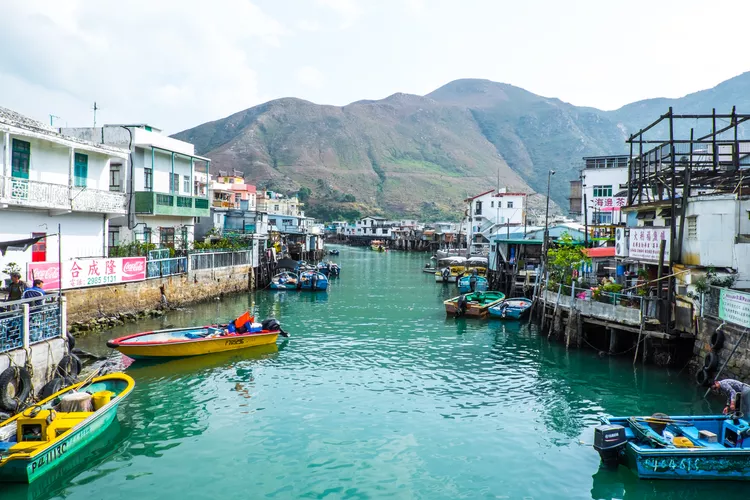When planning a trip to Hong Kong, visiting one of the small fishing villages outside the city is a great way to experience local culture and take in some of the natural beauty of China and the surrounding area; chief among them is the small village of Tai O.
How to Get to Tai O
Tucked away in the greenery of South Lantau, transportation to Tai O is available by ferry or bus. Practically, the best way to get to Tai O is to take the Hong Kong Mass Transit Railway (MTR) to Tung Chung Station and then the number 11 bus from Tung Chung Town Centre for a total journey of a little over an hour, if the connections fall into place.
Alternatively, the ferry from the Central Ferry Pier (in front of the IFC Mall) connects to Mui Wo on Lantau Island, where you can catch the number 1 bus from the bus terminal to the village. While slightly slower, the ferry connection offers great panoramic views of Lantau and Hong Kong Island while you make your way to the fishing village.
You can also take the MTR to Tung Chung Station Exit B. Take the Ngong Ping Cable Car to Ngong Ping Village (approximately 25 minutes). Then board bus 21 to Tai O terminus (approximately 20 minutes more) and walk for five minutes to the rope-drawn ferry.
Things to Do in Tai O
Like most small fishing towns near Hong Kong, Tai O operates at a much slower pace, which offers tourists a chance to escape the neon lights and towering buildings of the city. The lifelong residents of Tai O, known as the Tanka people, keep busy fishing and tending to work around the village. According to a 2013 article on CNN, “tourists have been flocking to Tai O to glimpse this part of Hong Kong’s rapidly disappearing past.” However, the few shops in town close by 5 p.m., and there’s no real nightlife here, making it less appealing if you’re looking for that type of adventure in Hong Kong.
Other nearby areas of interest include:
- The newly-constructed Tai O Promenade
- The Tai O Market
- Kawn Tai Temple
- Nga Kok Church
- The signature stilt houses built by the Tanka people along the Tai O River
Moreover, you can stay at the Tai O Heritage Hotel, a 1902-constructed police station that was converted into its current form in 2012, featuring nine colonial-style rooms and suites, as well as a rooftop restaurant serving local cuisine.
Hong Kong’s Fading Past: History of Tai O
As of 2011, the population of Tai O was roughly 2,700 people. According to archeological data, permanent settlements have only existed in the area for roughly three hundred years, dating back to the early 16th century. Tai O’s location at the mouths of the Tai O Creek and River, where they meet the South China Sea, has made it the base for multiple military and smuggling operations throughout its history.
A military base was constructed in the 1720s to protect shipments on the Pearl River, and reports of stolen tobacco and guns continue to this day. From the 1800s through the 1930s, British occupation changed much of the cultural landscape of this small village, including its name (formerly Tanka) to its current designation, Tai O. Additionally, after the Chinese Civil War in the 1940s, Tai O served as a major port-of-entry for illegal immigrants fleeing the Chinese government, many of whom integrated seamlessly into the existing culture of the village.
As time moved on, industrialization and modernization of Hong Kong continued to alter towns and communities around Tai O during the latter half of the 20th century; however, the village itself remained relatively unchanged. Salt was harvested, fish were caught, and new homes constructed, but residents who were born there often left Tai O upon reaching adulthood.
In the early 2000s, a significant fire damaged a majority of the stilt houses in Tai O, leaving much of the community in ruins. Nevertheless, a 2013 project by the Hong Kong government aimed to revitalize this dying fishing village by constructing a new promenade and initiating developments to breathe new life into the area.
There was once a manually operated drawbridge spanning the narrow creek dividing the town, but it has since been replaced by a rope-drawn “ferry” that has operated for over 85 years.
Consequently, while many traditions of the past are still celebrated today, many in Tai O fear its culture may soon fade as real estate development encroaches and more local college students move away in search of work in other parts of the city.





